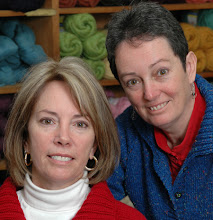What I want to talk about is how you can make some changes to a cable pattern to make working your cable crossings easier to keep track of. You can put cable "tells" in your pattern so that it can't keep it's poker face on.
Some cable patterns, especially wide ones, are very busy. There might be cable crossings happening somewhere on every right side row. If you're working in the round, you then have a working round where you cross and a comfort round where you knit the knits and purl the purls.
But some patterns have several rounds where no crossings take place. The simple rope cable is a prime example, *work 2 rounds with purls and knits, work a crossing round, work 5 rounds with purls and knits as set; repeat from *. The cable crossing is actually every 8th round.
How can you keep track? You can make ticks on the side of the page but did you make a tick this time or were you distracted as you worked the cable and did you forget? Are you sure?
A more complicated pattern could be added to. Give yourself something to "tell" you when to cross. Take this double crossed rope cable pattern with purl stitches in between the cables.
What if you added one stitch in the centre and knit it through the back loop every other round (K1tbl).
Now as you approach the pattern panel you can look over to see if that centre stitch is twisted or not. Count the twisted stitches and you know when to cross your cables again. Maybe make the side stitches in garter stitch too? How could you go wrong?!
One more idea. How about adding the "tell" on either side of your cable panel as a border. It won't interfere with the pattern itself but it will give you the needed information. Here I've added the garter stitches outside of the single rope cable pattern.
-Deb


































